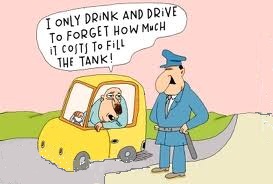So we hear automobiles everywhere and some things come to mind:
speed, power, fuel economy, maintenance, reliability... which of these is the most important???
Types
Well, these autos can be separated into different groups. We shall call a group cars, which basically is one that has four wheels and can carry up to six people. We also have vans which are commonly called "space buses". These can carry up to eight people depending on the van-size. We have buses and finally we have SUVs (Sport Utility Vehicles). These are commonly called Jeeps which is a wrong nomenclature because Jeep is just an automobile manufacturer.
What to Consider
Let us briefly look at the things to consider when buying a new car. It’s important to select the right one because ‘The cars we drive say a lot about us’. The first thing to consider is your taste. In terms of appearance, Japanese cars tend to look the most attractive (Hondas, Toyotas, Nissan etc). German cars have a classy look which generally signifies power (Mercedes, BMW Volkswagen). American cars are ‘just there’ when it comes to appearance, though a few stand out (Cadillac).
Being a young guy, I’m not such a big fan of SUVs, though many people give the excuse of the bad roads we have for buy SUVs. I feel SUVs are just too big, make a lot of noise, very greedy with my petrol, take a lot of money when changing tyres, don’t move too well, aren’t stable...The list is endless. The only exception I can make is the Murano and Infinity FX35 and FX45.
VANS ARE FAMILY CARS. It freaks me out when I see elderly people or people that live alone buying Siennas, Odysseys and the likes. These autos have big engines because of the big size. Big engines mean more petrol. So why waste it when you are driving all alone? So, for a family car, I’ve come to love the Chrysler Town and Country. It provides a lot of power, it's good with fuel, it's rugged, which is what we need for our roads and at the same time for good looks. Chrysler, actually, is the first car company to start making vans (space busses) and are still the best at it.
So to my favourite group... ordinary CARS. These are the ones for the majority, students, couples, family, young, old.
Talk of Engines
Engines come in different sizes. The bigger the engine, the more power it generates and the more fuel it consumes. The numbers written at the back of cars, most of the time, tell the size of the engine. For example, 1.8, 2.2,3.0... Translating these mean a 1.8 litre engine, 2.2 litre, etc. Big engines from 3.0 and above don’t do too well with petrol and for local shuttles but they aren’t too bad on the highways. I’ll prefer a big engine for highways because of the extra power they create. Engines also come in different shapes. We have the straight and the V. If you want a car to move you from office to your house and you are particular about your fuel economy, like me, get a small engine, 2.2 and below. The smallest I’ve seen is a 1.2 in a Nissan Micra.
Car Reliability
In terms of reliability, all cars to some extent are reliable. It all depends on the way you take care of them. An exception is the Jaguar, which purposely has defects in the car,
but this is a story for another day. I have also noticed that the Nissan Murano and Nissan Maxima always have transmission problems no matter how well you take care of them, but the Infinity equivalent seem pretty good. Japanese cars are the most popular in this part of the world and so their spare parts are generally easy to find, and cheap also. The best of them is TOYOTA. German cars rarely develop problems, but could be a pain when they do. The Korean cars, Hyundia and Kia are pretty cheap also to maintain, but to my knowledge, they are not known to have the long life and 2nd hand value as the Japanese and German cars.
I hope I’ve assisted you in deciding which car to get. You can always reach us at TRANSARDOR MOTORS for consultancy and purchase of vehicles.







